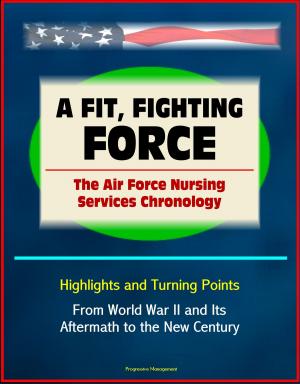2012 Biomass Energy Guide: Biomass Multi-Year Program Plan and Biomass Biennial Review Report - Biomass to Bioenergy Conversion, Energy Crops, Algae, Wastes, Feedstock Supply, Markets, Transportation
Nonfiction, Science & Nature, Science, Physics, Energy, Biological Sciences, Ecology| Author: | Progressive Management | ISBN: | 9781465905505 |
| Publisher: | Progressive Management | Publication: | March 8, 2012 |
| Imprint: | Smashwords Edition | Language: | English |
| Author: | Progressive Management |
| ISBN: | 9781465905505 |
| Publisher: | Progressive Management |
| Publication: | March 8, 2012 |
| Imprint: | Smashwords Edition |
| Language: | English |
This important up-to-date guide to biomass fuels and bioenergy contains two major Department of Energy reports converted for accurate flowing-text ebook format reproduction. The Biomass Multi-Year Program Plan (MYPP) issued in November 2011 is a comprehensive operational guide about the nation's biomass energy program. A second document, the 2011 Biennial Review Report issued in February 2012 provides the results of independent evaluations of biomass program activities.
Program Plan: This Multi-Year Program Plan (MYPP) sets forth the goals and structure of the Biomass Program. It identifies the research, development, demonstration, and deployment (RDD&D) activities the Program will focus on over the next five years and outlines why these activities are important to meeting the energy and sustainability challenges facing the nation. This MYPP is intended for use as an operational guide to help the Biomass Program (the Program) manage and coordinate its activities, as well as a resource to help articulate the Program's mission and goals to management and the public.
Biomass includes agricultural residues, forest resources, perennial grasses, woody energy crops, wastes (municipal solid waste, urban wood waste, and food waste), and algae. It is unique among renewable energy resources in that it can be converted to carbon-based fuels and chemicals, in addition to power. Biomass is the only renewable resource that can supplant petroleum-based liquid transportation fuels in the near term. The United States has over one billion tons1 of sustainable biomass resources that can provide fuel for cars, trucks, and jets; make chemicals; and produce power to supply the grid, while creating new economic opportunities and jobs throughout the country in agriculture, manufacturing, and service sectors.
Biomass Program Mission and Goals - The mission of the Program is to: Develop and transform our renewable biomass resources into commercially viable, high-performance biofuels, bioproducts, and biopower through targeted research, development, demonstration, and deployment supported through public and private partnerships. The goals of the Program are to develop sustainable, commercially viable biomass utilization technologies to: Enable the production of biofuels nationwide and reduce dependence on oil through the creation of a new domestic bioenergy industry supporting the Energy Independence and Security Act of2007 (EISA) goal of 36 billion gallons per year (bgy) of renewable transportation fuels by 2022 Increase biopower's contribution to national renewable energy goals through increasing biopower generating capacity.
Review Report: This document summarizes the recommendations and evaluations resulting from the U.S. Department of Energy, Office of Energy Efficiency and Renewable Energy, Biomass Program's Biennial Peer Review Meeting, June 27-28, 2011. All programs in the Department of Energy, Office of Energy Efficiency and Renewable Energy, are required to conduct a formal peer review of project portfolios as a means for enhancing the management, relevance, effectiveness, and productivity of the activities. The Biomass Program accomplishes this requirement using a two-fold approach, consisting of the following: Platform Reviews - Sub-elements of the Program, referred to as platforms, undergo a systematic review of their project portfolios and platform management by a team of relevant subject-matter experts. During this year's peer review process, eight individual platforms and a total of 217 projects were reviewed.
This important up-to-date guide to biomass fuels and bioenergy contains two major Department of Energy reports converted for accurate flowing-text ebook format reproduction. The Biomass Multi-Year Program Plan (MYPP) issued in November 2011 is a comprehensive operational guide about the nation's biomass energy program. A second document, the 2011 Biennial Review Report issued in February 2012 provides the results of independent evaluations of biomass program activities.
Program Plan: This Multi-Year Program Plan (MYPP) sets forth the goals and structure of the Biomass Program. It identifies the research, development, demonstration, and deployment (RDD&D) activities the Program will focus on over the next five years and outlines why these activities are important to meeting the energy and sustainability challenges facing the nation. This MYPP is intended for use as an operational guide to help the Biomass Program (the Program) manage and coordinate its activities, as well as a resource to help articulate the Program's mission and goals to management and the public.
Biomass includes agricultural residues, forest resources, perennial grasses, woody energy crops, wastes (municipal solid waste, urban wood waste, and food waste), and algae. It is unique among renewable energy resources in that it can be converted to carbon-based fuels and chemicals, in addition to power. Biomass is the only renewable resource that can supplant petroleum-based liquid transportation fuels in the near term. The United States has over one billion tons1 of sustainable biomass resources that can provide fuel for cars, trucks, and jets; make chemicals; and produce power to supply the grid, while creating new economic opportunities and jobs throughout the country in agriculture, manufacturing, and service sectors.
Biomass Program Mission and Goals - The mission of the Program is to: Develop and transform our renewable biomass resources into commercially viable, high-performance biofuels, bioproducts, and biopower through targeted research, development, demonstration, and deployment supported through public and private partnerships. The goals of the Program are to develop sustainable, commercially viable biomass utilization technologies to: Enable the production of biofuels nationwide and reduce dependence on oil through the creation of a new domestic bioenergy industry supporting the Energy Independence and Security Act of2007 (EISA) goal of 36 billion gallons per year (bgy) of renewable transportation fuels by 2022 Increase biopower's contribution to national renewable energy goals through increasing biopower generating capacity.
Review Report: This document summarizes the recommendations and evaluations resulting from the U.S. Department of Energy, Office of Energy Efficiency and Renewable Energy, Biomass Program's Biennial Peer Review Meeting, June 27-28, 2011. All programs in the Department of Energy, Office of Energy Efficiency and Renewable Energy, are required to conduct a formal peer review of project portfolios as a means for enhancing the management, relevance, effectiveness, and productivity of the activities. The Biomass Program accomplishes this requirement using a two-fold approach, consisting of the following: Platform Reviews - Sub-elements of the Program, referred to as platforms, undergo a systematic review of their project portfolios and platform management by a team of relevant subject-matter experts. During this year's peer review process, eight individual platforms and a total of 217 projects were reviewed.















